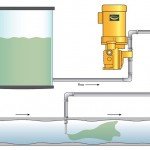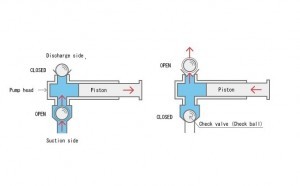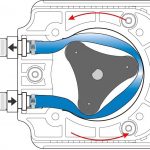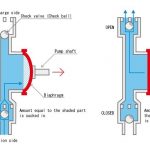 Process control applications sometimes require chemicals. This requires a Chemical Feed System. The application requirements are the priority, but a chemical feed system’s design is typically based on the customer’s instrument and chemical pump preferences.
Process control applications sometimes require chemicals. This requires a Chemical Feed System. The application requirements are the priority, but a chemical feed system’s design is typically based on the customer’s instrument and chemical pump preferences.
In a process control application, chemicals are usually added in liquid form at a controlled rate using positive displacement metering pumps. The required chemical pumps are selected based on the strength of the chemicals and the required flow rate.
Chemical Feed design basics
When chemical feed controls are part of a process control panel, define the requirements from the control panel’s perspective. The control panel has to know the status of process variables required to control the application. This means it has to connect to devices that are monitoring the process. See Pump Control Panels for a break down.
Chemical feed systems can be purchased complete, but they’re usually purchased as separate components; chemical storage tank, piping, pumps, etc.. Sometimes the system comes on a chemical feed skid. Chemical Feed Pumps are used in many applications with one of three types of positive displacement pumps
Solenoid Metering Pumps
Solenoid Pumps are the simplest and least expensive type of Metering Pump. They consist of a spring return piston controlled by an electric solenoid. Each time the pump is stroked (solenoid On – Off) a fixed amount fluid is pushed out by the piston. The fluid flow rate is controlled by increasing the stroke frequency.
Solenoid type metering pumps are used in low flow applications.
Peristaltic Metering Pumps
Peristaltic Pumps are simple, but can be expensive. They consist of a continuous tube wrapped around a rotating squeegee that pushes fluid through the tube. A motor controls the rotating squeegee. The fluid flow rate is controlled by changing the motor speed.
Peristaltic type metering pumps are used in nasty low flow applications .
Diaphragm Metering Pumps
Diaphragm Pumps are more expensive. They consist of an flexible Diaphragm controlled by a motor through an adjustable stroke rod.
The fluid flow rate is controlled by changing motor speed (Diaphragm Stroke Frequency) and changing the Diaphragm Stroke Length (amount of Chemical delivered per Stroke)
Diaphragm type metering pumps are used in high flow rate applications like a water treatment plant where the water flow rate and multiple water chemistry properties are being analyzed and controlled. Multiple Diaphragm type metering pumps are used to inject multiple chemicals to control multiple water chemistry properties.
Often, motor speed (Diaphragm Stroke Frequency) for the group of pumps is controlled based on water flow rate, and the Diaphragm Stroke Length (amount of Chemical delivered per Stroke) for individual metering pumps is controlled by the chemical analyzer measuring the chemical property the metering pump is controlling.



